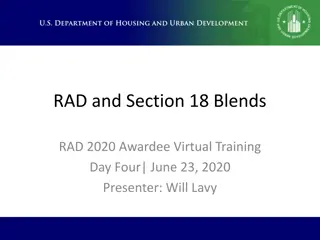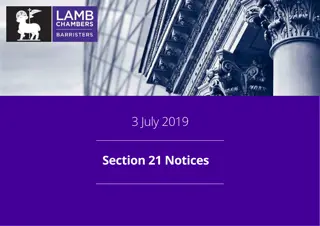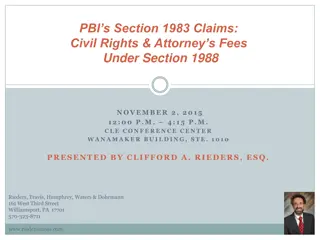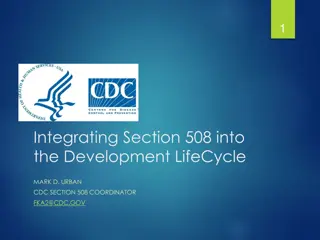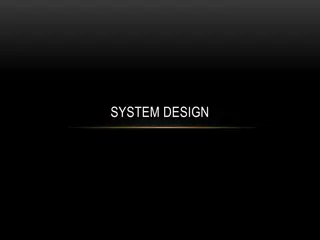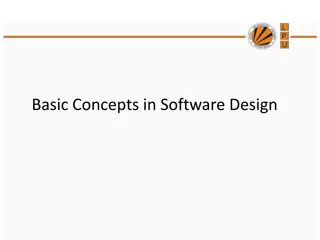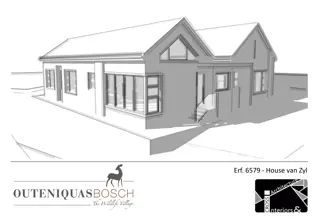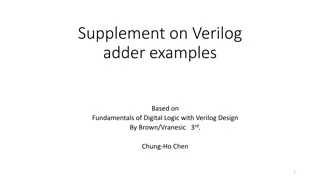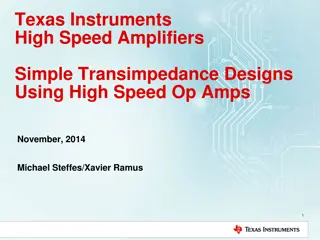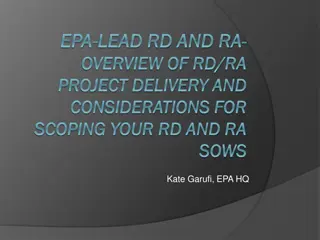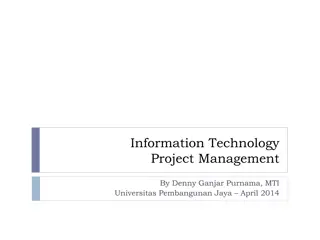Design Considerations for Project 3 Section 6, 5, and 7
Delve into the intricate details of address translation, TLB management, page tables, swapping mechanisms, and more in the context of Project 3 design considerations. Explore the complexities of memory access, context switching, eviction schemes, segment permissions, and efficient resource allocation strategies for optimal system performance.
Download Presentation

Please find below an Image/Link to download the presentation.
The content on the website is provided AS IS for your information and personal use only. It may not be sold, licensed, or shared on other websites without obtaining consent from the author.If you encounter any issues during the download, it is possible that the publisher has removed the file from their server.
You are allowed to download the files provided on this website for personal or commercial use, subject to the condition that they are used lawfully. All files are the property of their respective owners.
The content on the website is provided AS IS for your information and personal use only. It may not be sold, licensed, or shared on other websites without obtaining consent from the author.
E N D
Presentation Transcript
Project 3 Design Considerations SECTION 6? 5? 7?
Preamble I know you all are waist-deep in ASST2 right now At the very least pay attention enough that you can think to yourself, Oh yeah, I think he mentioned that in the slides later when working on your ASST3 design doc
Address Translation On memory access: check TLB TLB miss? Trap to kernel! Kernel looks through page table(s) Page table hit? In physical memory? Load the TLB! Not in physical memory? Swap in the proper page! Bad address entirely? Kill the program! Example on board
TLB Entries managed by kernel Relevant functions: tlb_read/write/random/probe arch/mips/include/tlb.h TLB miss trap to kernel vm_fault(int faulttype, vaddr_t faultaddress) TLB entry bits TLBHI_VPAGE: virtual page index (mask) TLBLO_PPAGE: physical page index (mask) TLBLO_DIRTY: whether page is writable (flag) TLBLO_VALID: whether page is valid (flag) What should happen on a context switch? Eviction scheme?
TLB (cont.) TLB shootdown!! pew pew pew OS/161 terminology is slightly different from ours ipi_tlbshootdown: shoot down specified entries on specified CPU vm_tlbshootdown: shoot down specified entries on this CPU vm_tlbshootdown_all: shoot down all entries on this CPU You need to implement vm_tlbshootdown/_all Note: Shooting down all entries technically shoots down any specified entries
Page Tables Segments Matches addrspace API and ELF layout What s in a segment? Page range Permissions Multiple levels Don t want to keep entire address space for each process Level of splitting is up to you What will your page table look like? What will your page table entries look like?
Swapping We can t fit every user page in memory Swap pages out to disk Eviction scheme? Protip: use LHD0 raw "lhd0raw:" Remember that vfs_open mangles the path string Need to manage disk locations How will you represent this information? Need to map pages to disk locations Where will you keep this information?
Core Map Mapping from physical pages to virtual pages Remember: core map must also be in physical memory! Core map must be in core map How big should the core map be? How many entries does the core map have? How do you reserve space for it? ram_stealmem() When should you reserve space for it?
Kernel / User Memory arch/mips/include/vm.h:42 Kernel memory is linearly mapped arch/mips/include/vm.h:68 Might be useful to define a corresponding macro What happens when you ask for address 0x00406a9b? 0x8160a4df? How do you access physical address 0x07f29c20? Kernel and user pages must coexist Which has priority?




